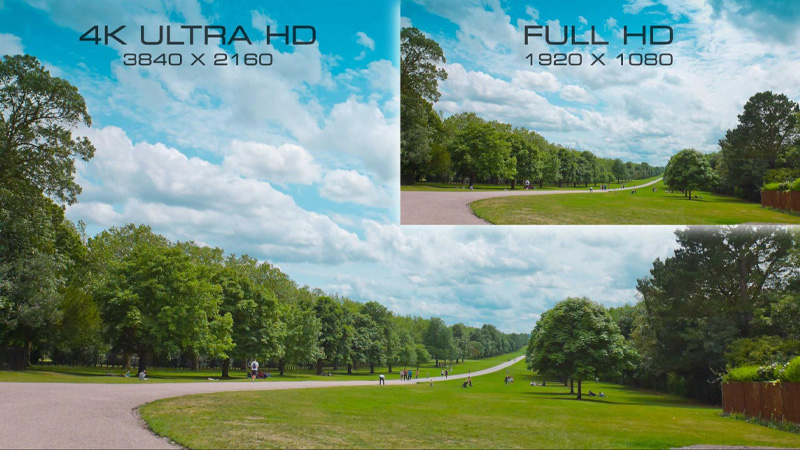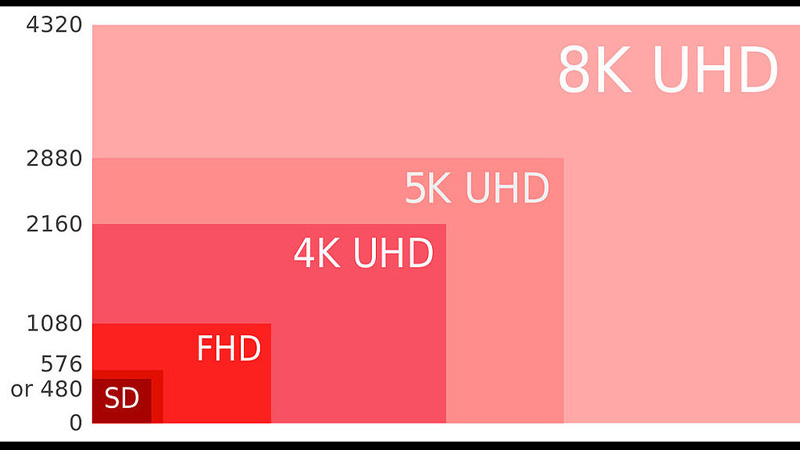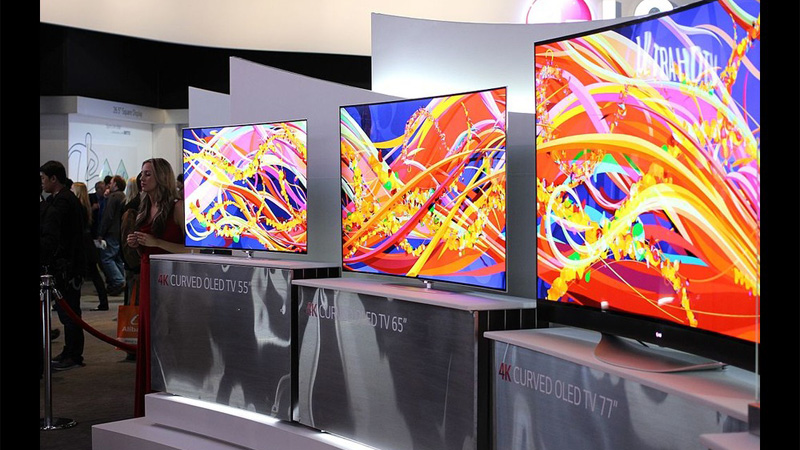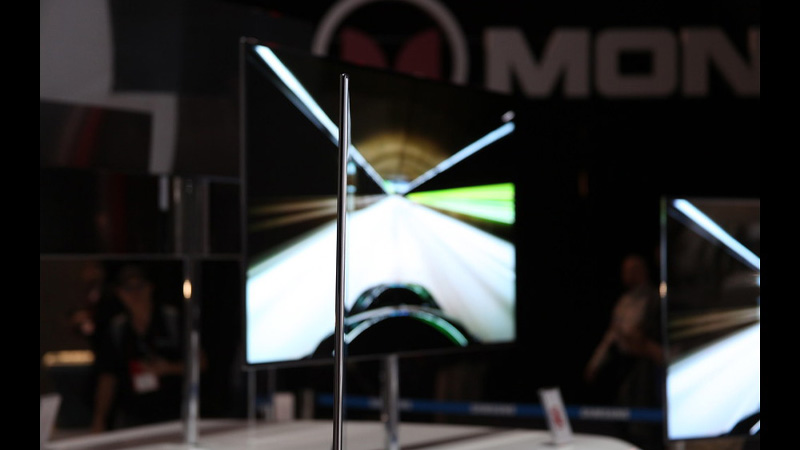
4K UHD vs OLED: Comprehensive Comparison
If you’re anything like most shoppers, you might get overwhelmed at all the special specs, metrics, and confusing terms used to sell TVs, computers, and other displays. LED? LCD? OLED? QLED? 4K? UHD? What are these? And how are you supposed to figure out the right metrics for your needs?
Not to worry – in this comprehensive guide, we’ll take you through the major differences between 4K UHD and OLED, and why you might choose one over the other.
1. What is 4K UHD, OLED and LCD?
What is 4K UHD?
4K UHD (or Ultra High Definition) is a term that describes the resolution of a display. Resolution is the number of pixels that make up a display – the more pixels, the brighter, clearer, and more vibrant an image can be.
4K means that an image has 3,840 pixels horizontally (almost 4,000, hence the name “4K”) and 2,160 pixels vertically. This is considered the peak of resolution, as most displays you can buy at home do not offer higher resolution than this. It’s highly desirable for gamers, movie fanatics, and anyone else who is concerned about getting the clearest images possible on their TV or computer monitor.
What is OLED?
OLED is a newer display technology that offers several advantages over LCD screens, which are considered the standard technology for most screens and displays. Displays are made of small dots of light called pixels.
In an OLED screen, every pixel is its own light source, like thousands of small light bulbs, which is what gives OLED displays their special properties like high contrast, vivid color, and fast response time.
What is LCD?
LCD is the traditional display technology used in televisions and monitors. A very simplified explanation of LCD displays – they rely on one large white light that is the size of the entire display, which “backlights” the entire thing. Light shines through each “pixel” through a special filter which can change the color of the pixel.

2. So, which is better: 4K UHD or OLED?
Many TV buyers try to compare 4K UHD and OLED televisions to get the best purchase for their home, but unfortunately the terms “4K UHD” and “OLED” can be difficult to compare since they refer to very different aspects of a display.
4K UHD refers to the resolution of a display, while OLED is a type of display technology. Comparing them is a bit like trying to determine whether you should buy a pair of shorts or buy something that’s green – they are not mutually exclusive. An OLED television can also be a 4K UHD television – in fact, they often are both.
However, it might be worth asking whether a 4K UHD LCD television can compare to an OLED television at the same resolution. Maybe you don’t want to blow money on a TV that doesn’t outshine the other in the factors that matter for your viewing habits (spoiler alert: OLED televisions are often a bit pricier). Or maybe you just want to be up to date on the latest display technologies offered for your television, computer, or other displays.

3. Contrast 4K UHD LCD vs OLED Televisions
Price
OLED displays – such as laptops, monitors, and televisions – are generally much more expensive than 4K UHD LCD televisions at the same size and resolution.
LCD screens have been the standard technology for displays for a while, while OLED is a very new technology, making it more costly to manufacture. Additionally, the technology that makes us OLED screens is a lot more intensive – it involves many very small lighting elements that can individually produce every color, while LCD screens only have one lighting element that goes through many pixels.
LCD televisions can sometimes be purchased new for under $100, while OLED televisions are rarely less than $1,000, even at their smallest sizes.
Black level
OLED is well-known for its ability to display extremely crisp, deep, dark blacks. By contrast, traditional LCDS (even 4K UHD ones) often have lighter, more gray-ish areas of darkness. Additionally, light objects on dark backgrounds can have a hazy halo around them that impacts the overall quality of the image.
The reason for the difference in the two display technologies’ ability to display blacks comes down to the backlighting in 4K UHD LCD TVs and the lack of backlighting in OLED TVs. Because LCD televisions are powered by one unit – a backlight – that comes through colored filters, even when a pixel is “off” (as in, the backlight has been covered up) some of the light can still shine through, much like light coming under a door.
OLED screens produce black by turning the individual pixels completely off. There is no light being emitted, and there is no backlight for light to leak out from. This creates dark images with lots of contrast.
Contrast
Similarly, OLED screens have incredible contrast when compared with 4K UHD LCD displays. Their ability to create “true” black on screen while eliminating any additional light leaking through the bright parts of the screen is incredibly vivid and eye-catching. LCD screens often suffer from light-colored “blooms” that occur around light objects when they contrast with their background.
Color
OLED displays have much better color accuracy than 4K UHD LCD screens for a number of different reasons. Much of this is due to OLED’s superior ability to create lifelike contrast and create deeper blacks than older display technologies.
Viewing angle
The angle at which you view your TV can have a lot to do with its clarity, and some television technologies have a narrow set of angles at which you can still view the image on the screen.
Typical 4K UHD LCD displays have a narrow viewing angle, which means viewers must be seated right in front of the screen for the best image. By contrast, OLED screens can be viewed from a much wider set of angles with relatively good clarity. This can be an important metric to consider depending on the layout of your TV viewing area and the number of people viewing your TV.

Response time
The response time for OLED television displays is often much faster than that of traditional 4K UHD LCD televisions. 4K UHD LCD televisions can range between 1-8 ms, while OLED televisions are often under 0.01 ms. This means that TV, films, and games appear much smoother on screen.
Brightness
Brightness between OLED and 4K UHD LCD displays can vary greatly depending on the models of display and how the displays are being used. Speaking very generally, LCD screens are brighter on average than OLED screens. However, the contrast of OLED screens can create an image that feels relatively more luminous, since the dark parts of the screen are so dark.
Burn-in
Unfortunately, one major downfall of the OLED technology is that they tend to be much more susceptible to screen burn-ins than LCD televisions.
Burn-ins are images that have been displayed too long on a screen and, as a result, are permanently “burned in” – meaning that a ghostly version of the image remains, even when the screen is displaying something else. TV home screens, task bars, and TV channel logos are frequent culprits for burn-in on OLEDs, since these are images that often remain static on the screen for large amounts of time.
Burn-ins occur in OLEDs because, when individual pixels are overused areas of the screen, their lighting elements lose their brightness and appear dimmer next to adjacent, less-used pixels. This dimness can faintly outline images, but in OLED TVs, they most often occur in large, unclear patches. In OLED screens, this burn-in is always permanent.
By contrast, LCD screens use one large light that shines through filters, which means that the lighting element is always being used uniformly. Sometimes LCD screens can appear to have burn-in, but this is usually just temporary image retention that will go away with some DIY fixes.
Energy consumption
4K UHD LCD TVs usually consume a relatively low amount of energy, and OLED TVs can vary depending on the image being produced on screen.
OLED TVs generally consume less energy than LCD televisions, especially if they are producing darker images. However, for bright images, OLEDs consume significantly more energy to produce these images.

4. Looking for Reliable LED Displays?
While OLEDs are considered the bleeding edge of display technologies, they may not outperform traditional 4K UHD LCD displays in every arena. Ultimately, the choice depends on your needs and how you like to use your displays.
We offer a number of high-quality LED display products and solutions, perfectly suited for clients in a wide range of industries and with a wide range of industry needs. Whether you’re looking for affordable LED display rentals for an upcoming event, or you’re looking to purchase displays for your event center, conference center, auditorium, church, or arena, we can help you get set up with clear, vivid, and reliable LED displays.